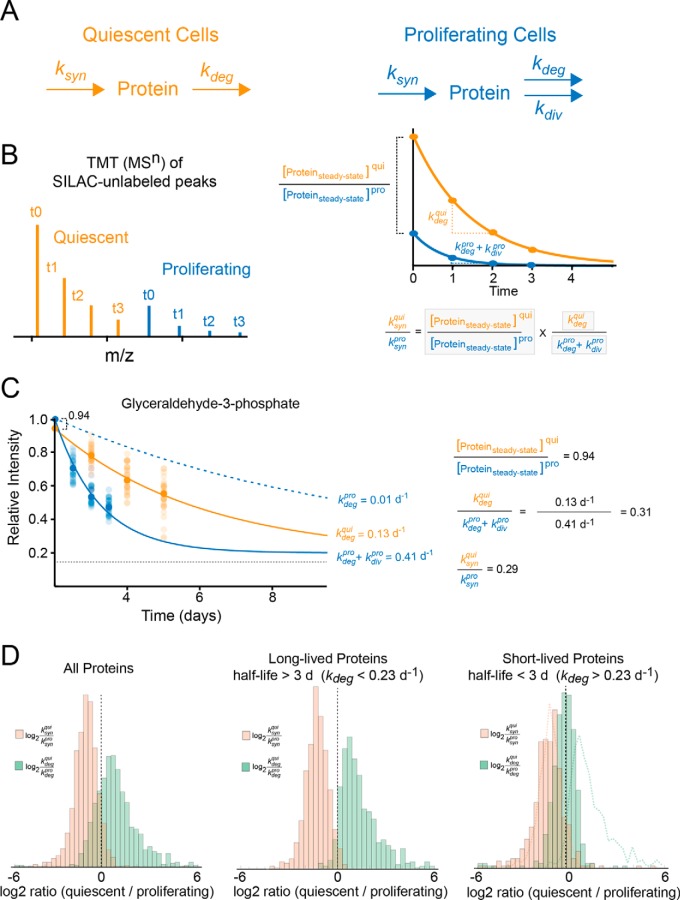Fig. 5.
The use of TMT-SILAC hyperplexing to measure relative differences in steady-state protein levels, degradation rates (kdeg) and synthesis rates (ksyn) between proliferating and quiescent cells. A, The schematic illustrates the kinetic model for synthesis and clearance of proteins in quiescent and proliferating cells. B, A theoretical TMT-SILAC hyperplexing analysis of a hypothetical protein with varying ksyn and kdeg values in quiescent and proliferating cells. The analysis of the decay of SILAC-unlabeled peaks allows the measurement of kdeg for both conditions as well as the ratio of steady-state protein levels. These parameters (boxed in the equation at the bottom of the figure) enable the measurement of the ratio of ksyn between the two conditions. The equation is derived based on the model presented under Experimental Procedures. C, Experimental analysis of an example protein (Glyceraldehude-3-Phosphate) showing the measured values for ratios of ksyn, kdeg and steady-state protein levels. The plot indicates the decay curve for the fractional labeling of SILAC-unlabeled peaks for all peptides mapped to the protein (transparent circles) as well as the median value for all peptides (solid circles). The solid line indicates a fit to a single exponential equation for measurement of clearance rate constants. For quiescent cells, the clearance rate constant equals the degradation rate constant. For proliferating cells, the rate of cell division (0.40 d−1) is subtracted from the clearance rate in order to determine the degradation rate (dashed blue line). D, The distribution of log2 ratios of synthesis and degradation rate constants between quiescent and dividing cells. The histograms are shown for all proteins, long-lived proteins (half-lives greater than 3 days in proliferating cells) and short-lived proteins (half-lives less than 3 days in proliferating cells). The dotted lines on the rightmost plot indicate the distribution of long-lived proteins for comparison.

